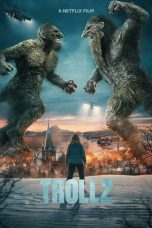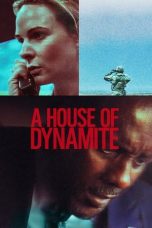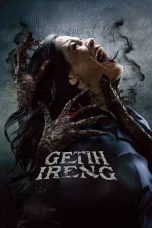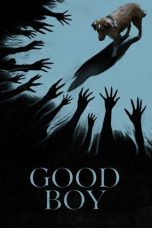Manhunter (1986) Movie Review: A Visually Striking Thriller that Launched a Genre
Manhunter, directed by Michael Mann and released in 1986, is a pioneering psychological thriller that introduced audiences to the world of Thomas Harris’s Hannibal Lecter novels. This stylish and atmospheric film was the first adaptation of Harris’s work, preceding the more widely known The Silence of the Lambs (1991). While Manhunter did not achieve significant commercial success upon its release, it has since gained a cult following and is revered for its innovative approach to the crime genre, its intense performances, and its visually arresting style.
Plot Overview
The film follows FBI profiler Will Graham (William Petersen), who has a unique ability to empathize with serial killers, allowing him to anticipate their next moves. However, this gift comes at a cost, as his deep psychological involvement with the killers he hunts takes a toll on his mental health. After a traumatic encounter with the cannibalistic Dr. Hannibal Lecktor (Brian Cox), Graham retires, but he is reluctantly drawn back into the field to track down a new killer known as “The Tooth Fairy,” later revealed as Francis Dollarhyde (Tom Noonan).
As Graham delves deeper into the mind of the Tooth Fairy, he must confront his own psychological demons, all while racing against time to prevent the killer from striking again. The investigation takes Graham across the country, leading to a tense and gripping showdown as he comes face-to-face with Dollarhyde in a battle of wits and wills.
Performances and Direction
William Petersen delivers a nuanced and intense performance as Will Graham, portraying him as a man haunted by his ability to understand the darkest parts of the human psyche. Petersen’s portrayal captures Graham’s inner turmoil, making him a compelling and sympathetic protagonist. His interactions with Brian Cox’s Hannibal Lecktor, though brief, are particularly chilling, as Cox’s understated and cerebral performance as the infamous doctor sets a tone of quiet menace.
Tom Noonan’s portrayal of Francis Dollarhyde is both terrifying and tragic, adding layers of complexity to the character. Noonan’s performance is deeply unsettling, as he brings a sense of vulnerability to the role that makes Dollarhyde a more nuanced antagonist than a typical movie villain. The scenes exploring Dollarhyde’s troubled past and his twisted motivations add depth to the character, making him more than just a figure of evil.
Michael Mann’s direction is a masterclass in style and atmosphere. Manhunter is marked by its distinctive visual aesthetic, with Mann employing bold color schemes, striking compositions, and innovative camera work to create a sense of unease and tension. The film’s use of blues, greens, and reds enhances the psychological undercurrents of the story, while the moody, synth-heavy score by Michel Rubini and The Reds adds to the film’s haunting and otherworldly feel.
Mann’s decision to focus on the psychological aspects of the story rather than explicit violence sets Manhunter apart from other crime thrillers of its time. The film delves into the minds of both the hunter and the hunted, exploring themes of duality, obsession, and the thin line between sanity and madness. This approach makes Manhunter a more cerebral and introspective film than many of its contemporaries.
Visual Style and Cinematography
One of Manhunter’s most striking features is its visual style, which has been highly influential in the crime genre. Cinematographer Dante Spinotti’s work on the film is exceptional, using light and shadow to create a sense of foreboding and to reflect the inner states of the characters. The film’s use of color is particularly noteworthy, with each hue serving as a visual metaphor for the characters’ emotional and psychological landscapes.
The film’s meticulous production design and use of location also contribute to its unsettling atmosphere. The sterile, clinical environments where much of the film takes place contrast sharply with the chaotic, violent acts of the killer, reinforcing the theme of hidden darkness beneath a veneer of normalcy. This contrast is most evident in Dollarhyde’s home, which is depicted as both a fortress of solitude and a prison of his own making.
Mann’s use of music is another standout element of Manhunter. The film’s score, along with its selection of songs by artists such as Shriekback and Iron Butterfly, creates a mood that is both hypnotic and eerie. The music enhances the film’s dreamlike quality, particularly in scenes where Graham is piecing together the killer’s mindset, making the audience feel as if they are slipping into the same psychological space as the characters.
Themes and Legacy
Manhunter explores several themes that would become central to the crime genre in later years, particularly the idea of the investigator who is deeply psychologically affected by the cases they work on. The film’s exploration of the symbiotic relationship between Graham and Dollarhyde—where understanding the killer requires Graham to confront his own darker impulses—adds a layer of complexity to the narrative that goes beyond the typical good-vs-evil dynamic.
The film’s focus on the mental and emotional toll of crime-solving would influence countless other films and television shows, most notably the CSI series, in which William Petersen would later star. Manhunter also paved the way for future adaptations of Thomas Harris’s work, setting the stage for the success of The Silence of the Lambs and the entire Hannibal Lecter franchise.
While Manhunter may not have been a box office hit upon its release, its influence on the crime and thriller genres cannot be overstated. The film’s stylistic innovations and its focus on the psychological aspects of crime-solving have left a lasting impact, making it a seminal work in Michael Mann’s filmography and a must-see for fans of the genre.
Where to Watch Manhunter Online in the USA
For those interested in experiencing this groundbreaking thriller, Manhunter is available on several streaming platforms in the United States:
1. Amazon Prime Video
- Availability: Rent or Buy
- Price: Rent starting at $3.99; Purchase at $14.99
- Details: Manhunter is available for rent or purchase on Amazon Prime Video, offering standard and high-definition options.
2. Apple TV
- Availability: Rent or Buy
- Price: Rent starting at $3.99; Purchase at $14.99
- Details: The film can be rented or purchased on Apple TV, accessible across all Apple devices.
3. Google Play Movies & TV
- Availability: Rent or Buy
- Price: Rent starting at $3.99; Purchase at $14.99
- Details: Google Play Movies & TV offers Manhunter for rent or purchase, playable on a variety of devices.
4. Vudu
- Availability: Rent or Buy
- Price: Rent starting at $3.99; Purchase at $14.99
- Details: Vudu provides the film with rental and purchase options, and different quality settings to suit your viewing preferences.
5. YouTube Movies
- Availability: Rent or Buy
- Price: Rent starting at $3.99; Purchase at $14.99
- Details: Manhunter is available on YouTube Movies, offering a convenient way to watch through the YouTube platform.
Conclusion
Manhunter is a visually stunning and psychologically intense film that has rightfully earned its place as a classic within the crime thriller genre. With its strong performances, particularly from William Petersen and Tom Noonan, and Michael Mann’s visionary direction, the film offers a unique and compelling take on the serial killer narrative.
The film’s exploration of the psychological toll of crime-solving, its innovative use of color and music, and its influence on subsequent films and television make Manhunter an essential watch for fans of the genre. Whether you’re a long-time admirer or discovering it for the first time, Manhunter remains a powerful and haunting cinematic experience that continues to resonate decades after its release.
















